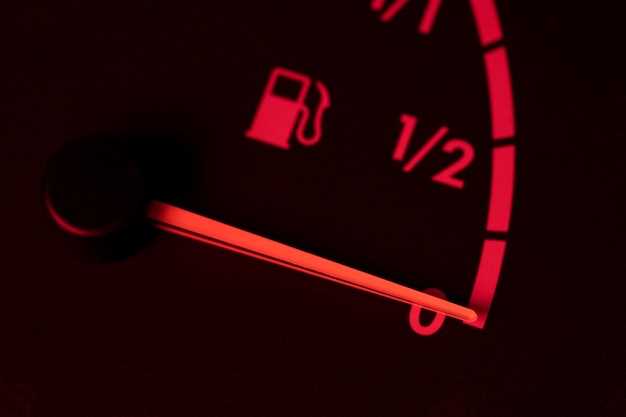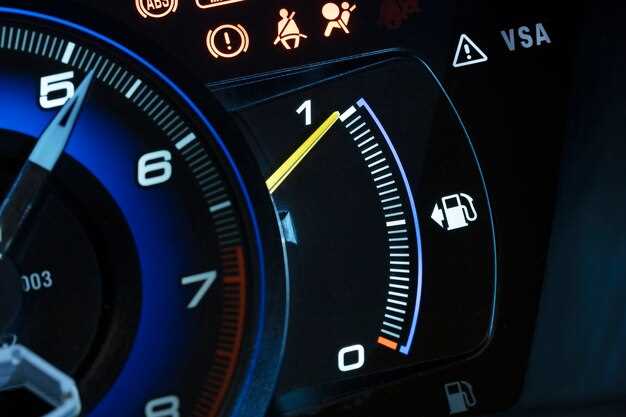
Tire pressure plays a crucial role in the performance of a vehicle, particularly when it comes to fuel consumption. Maintaining the correct pressure in your tires is not just about ensuring a smooth ride; it directly influences how efficiently your vehicle uses fuel. When tires are underinflated, the increased rolling resistance forces the engine to work harder, which can lead to higher fuel consumption.
Research has shown that every 1 psi drop in tire pressure can decrease fuel efficiency by approximately 0.4%. Therefore, consistently monitoring and adjusting tire pressure is essential for optimizing your car’s performance and reducing fuel expenses. Additionally, properly inflated tires enhance safety, improve handling, and prolong tire life, making it a key aspect of vehicle maintenance.
Understanding the relationship between tire pressure and fuel consumption highlights the importance of regular checks and necessary adjustments. By prioritizing the maintenance of your tires, you not only protect your investments in fuel but also contribute to a more sustainable driving experience. In this article, we will delve deeper into how tire pressure affects fuel efficiency and provide practical tips for maintaining optimal tire pressure.
The Impact of Tire Pressure on Fuel Consumption
Tire pressure plays a crucial role in determining the efficiency of fuel consumption in vehicles. Maintaining the correct tire pressure is essential not only for safety but also for optimizing fuel economy. Under-inflated tires increase rolling resistance, which forces the engine to work harder, resulting in higher fuel consumption.
When tires are inflated to the recommended pressure, they provide optimal contact with the road surface, ensuring better traction and stability. Conversely, low tire pressure leads to a larger contact area between the tire and the road, which can significantly increase the energy required to maintain speed.
Research indicates that for every 1 PSI drop in tire pressure, fuel efficiency can decrease by approximately 0.4%. This might seem minor, but over time and distance, it can lead to significant increases in fuel costs.
| Tire Pressure Status | Fuel Efficiency Impact |
|---|---|
| Proper Pressure | Optimal fuel economy |
| Low Pressure | Increased fuel consumption |
| Over Pressure | Potential safety risks and reduced grip |
Moreover, driving on under-inflated tires can lead to premature wear and tear, which not only necessitates more frequent replacements but further diminishes fuel efficiency. Regularly checking tire pressure is a simple yet effective method to ensure that vehicles operate at peak performance.
In conclusion, maintaining the correct tire pressure is vital for enhancing fuel efficiency. Drivers who stay vigilant about tire maintenance are not only promoting their vehicle’s longevity but are also contributing to economic savings in fuel costs.
How Underinflated Tires Increase Fuel Costs

Underinflated tires can significantly affect fuel efficiency, leading to increased fuel costs for drivers. When tires are not inflated to the recommended pressure, the surface area in contact with the road increases. This phenomenon creates higher rolling resistance, requiring the engine to work harder to maintain speed.
Lower tire pressure also results in poor handling characteristics, which can further impact fuel consumption. Drivers may find themselves accelerating or braking more frequently to maintain control, leading to wasted energy and additional fuel usage.
Moreover, operating vehicles with underinflated tires leads to premature wear, which may necessitate earlier tire replacements. Frequent replacements not only raise tire expenses but also can contribute to higher fuel costs over time, as less efficient tires require more energy to operate.
In summary, maintaining proper tire pressure is essential for minimizing fuel expenses. Regularly checking and adjusting tire inflation can improve safety, enhance vehicle performance, and lead to substantial savings at the pump.
Optimal Tire Pressure for Maximum Fuel Efficiency
Maintaining the correct tire pressure is crucial for achieving optimal fuel efficiency in your vehicle. Over-inflated or under-inflated tires can significantly affect fuel consumption, leading to unnecessary expenses and increased environmental impact.
Here are some key points regarding the optimal tire pressure:
- Manufacturer Specifications: Always refer to the vehicle manufacturer’s guidelines for the recommended tire pressure. This information can usually be found in the owner’s manual or on a sticker located inside the driver’s door frame.
- Regular Monitoring: Checking tire pressure regularly–at least once a month and before long trips–helps ensure that your tires are inflated to the optimal level. Changes in temperature can cause fluctuations in pressure, so adjustments might be necessary as the seasons change.
- Impact of Under-inflation: Tires that are under-inflated can increase rolling resistance, forcing the engine to work harder, thus consuming more fuel. Generally, for every 1 PSI drop in tire pressure, fuel efficiency can decrease by about 0.2%.
- Consequences of Over-inflation: While it may seem beneficial to inflate tires beyond the recommended pressure, over-inflated tires can reduce the contact area with the road, leading to less traction, uneven wear, and safety issues.
In conclusion, maintaining optimal tire pressure not only maximizes fuel efficiency but also enhances safety and extends tire life. Regular checks and adherence to manufacturer recommendations are key strategies for efficient fuel consumption.
Simple Steps to Maintain Ideal Tire Pressure

Maintaining the correct tire pressure is crucial for optimal fuel efficiency. Follow these simple steps to ensure your tires are always at their ideal pressure.
First, check the recommended tire pressure for your vehicle. This information is usually found on a sticker inside the driver’s door or in the owner’s manual. Knowing the correct pressure helps you avoid under-inflation or over-inflation, both of which can negatively impact fuel consumption.
Next, invest in a reliable tire pressure gauge. Regularly using a gauge to measure tire pressure will ensure accuracy. Check your tires when they are cold, as driving can temporarily increase pressure due to heat.
Make it a habit to inspect your tire pressure at least once a month, and don’t forget to do it before long trips. This routine check can prevent performance issues and enhance fuel efficiency.
If you find that your tire pressure is consistently low, look for visible signs of leaks or damage. Punctures or damaged valves can lead to air loss, which can hinder fuel economy. If necessary, consult a professional to address these issues.
Finally, remember to rotate your tires and align your wheels regularly. Proper tire maintenance not only extends tire life but also ensures that all tires wear evenly, which can help maintain consistent pressure and, therefore, better fuel efficiency.



